Packaging has historically been a siloed aspect of the automotive supply chain that hasn’t evolved in pace with the rest of the industry, but evolution from the status quo could be forced to take place, as existing packaging is not compatible with logistics automation. Automotive Logistics explores why the industry needs to start viewing packaging as a strategic function, and how it could give OEMs a competitive advantage through increasing efficiency and sustainability.
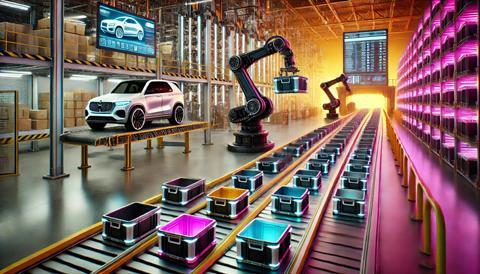
As automation reshapes automotive production and logistics, traditional packaging solutions are becoming a bottleneck. With the introduction of automated mobile robots (AMRs), robotic picking systems and evolving automated technologies replacing manual handling, traditional packaging solutions are proving inadequate and creating a roadblock to real progress being made in efficiency.
As a result, OEMs and suppliers are forced to rethink packaging strategies and start to see them as a competitive advantage that can increase efficiency, cut costs and improve sustainability – rather than just a vessel for parts. This shift requires new materials, standardised designs, and a more integrated, cross-functional approach between packaging, logistics, purchasing and automation teams.
Why packaging is holding back automated logistics
The main problem with packaging in automated logistics is the unpacking of parts. Typically, when inbound parts arrive at plants, they come wrapped in protective layers such as plastic bags, corrosion-resistant materials or oversized bins, particularly if the parts are especially fragile or coming from overseas. While a human can unwrap these and easily identify different parts within the layers, robots and AMRs are not yet capable of this, creating a big problem as we move towards fully autonomous in-plant logistics. It can lead to inefficiencies, increased costs, and unnecessary repacking. A lack of standardisation of packaging across the automotive industry further complicates this. Getting ahead of the curve by working with suppliers to redesign packaging so that it is robot-friendly can be a significant competitive advantage.
Many current packaging solutions are legacy solutions rather than required or strategic solutions. Some parts may only be transported a short distance but packed as if they are being shipped internationally. Assessing the need for protective packaging can also eliminate unnecessary layers to reduce cost, waste and handling time in automated facilities.
Rethinking custom bins for longevity and flexibility
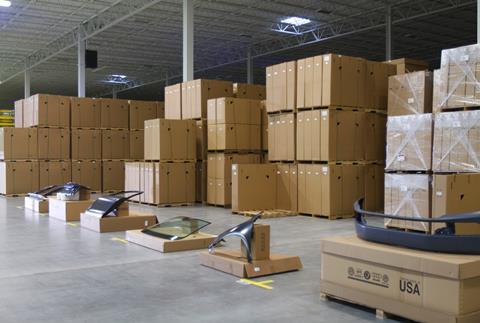
Creating custom bins could temporarily improve efficiency within inplant logistics. If a bin has compartments that are spaced a certain distance apart, robots are able to identify and pick the correct parts needed from each bin. But this option isn’t very scalable. An OEM could need a few thousand of these custom bins for specific parts which could be changed out any time a new model goes into production. If the new parts no longer fit the custom bins, it leaves thousands of wasted bins, taking up valuable plant space and contributing significant cost.
Even if an OEM did sink the cost of repeat ordering custom bins every few years, there is also the problem of space on the factory floor. As AMRs become more prevalent, routes for them to travel become important considerations in inplant logistics. If two AMRs are to pass each other in an aisle, the width of the bins needs to be narrow enough to allow this to happen. Reducing the size of the bins reduces the amount of parts the AMRs can carry, thereby reducing the efficiency payoff.
This business case for modular and reusable auto packaging
With shorter vehicle product cycles, due in part to supply and demand shifts between ICE, hybrid and EV production, custom bins can quickly become obsolete. As a result, OEMs and suppliers should invest in modular, reusable bin designs that can be reconfigured for different parts, instead of committing to custom solutions with short lifespans.
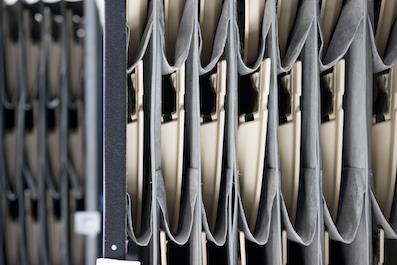
Another problem is that the tolerance of bins and racks, even if new, are often too low to support automation. Automated programming of the number of parts in a bin or rack could lead to overloading or incorrect loading, especially if the parts being loaded are configured in different patterns and combinations to make them fit securely, which could cause expensive damage to parts.
The solution to this lies in investment. Designing packaging for robotic compatibility significantly increases costs, partly due to tighter tolerances and increased manufacturing precision. But investing more in packaging design now could pay off in the long-run, giving OEMs and suppliers who do invest a head-start on the competition.
Breaking down siloes to improve packaging strategy
From an engineering point of view, the first step for an OEM to gain a strategic advantage through packaging is to review packaging guidelines for inbound materials. In doing this, carmakers can give their suppliers direction and limitations in their packaging designs. Working as closely as possible with the suppliers as early as possible will be beneficial for the whole supply chain, helping improve sustainability, reduce waste and enhance compatibility with autonomous tools.
Digital tools such as inventory management systems and warehouse management systems could help in the planning of more consistent and predictable packaging solutions that are compatible with automation. But for this to work, siloes within OEMs and suppliers need to be broken down.
Creating a packaging approval process and a local electronic system to store the data received will help share information across departments and break down siloes. This data can help various departments develop the most efficient lines, transportation, warehousing and automation. Establishing both production and aftermarket solutions at the same time can boost this efficiency even further.
This can also help increase standardisation of packaging across plants and throughout the supply chain. If multiple plants use consistent packaging formats, it becomes easier to implement automated storage, retrieval and transport systems.
“Our goal was to automate empties counting as efficiently and simply as possible” - Wolfgang Schratzenstaller, BMW Group Plant in Dingolfing
Using digital tools and working with suppliers can also help rectify human flaws that were introduced in legacy packaging. At Volvo Cars, a quick win came from addressing rounding that is common in part orders and packaging.
Sean Bricknell, global head of inbound logistics and packaging at Volvo Cars, previously told Automotive Logistics: “If you go into a plant and pick up a random box of parts and look at what the unit load is, the number very often ends with a zero or a five, because human nature is to round it out. You could have a box with 25 parts that could actually have 27 or 29 in there.”
He said that adding 10% more parts into a box could cause a 10% reduction in the number of boxes coming into a plant, which could translate into a 10% reduction in the number of trucks and a 10% reduction in CO2 emissions.
While the fix is simple in theory, it is time-consuming in practice, as it requires changing every packaging instruction for every part, and then testing to ensure that adding more parts won’t damage them or impact quality. The changes need to be negotiated with the suppliers and agreed. But as Bricknell said: “If you don’t actively try to do it, it just doesn’t happen.” Even beginning this process with one type of part can give a boost to efficient and sustainable operations.
How digitalisation can optimise packaging efficiency
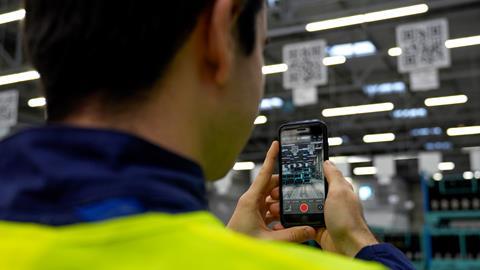
Many plants and facilities in the automotive supply chain face the problem of huge stacks of empty bins taking up valuable space. In some cases, plants keep more bins than necessary, leading to inefficiencies.
One way to combat this challenge is through the use of digital tools such as artificial intelligence (AI), something that BMW has been practicing at its Dingolfing plant in Germany.
In a partnership between BMW Group Plant Dingolfing and Landshut University of Applied Sciences, students have developed an innovative digital tool that automates the counting of empty containers using AI, saving time and avoiding errors.
“Our goal was to automate empties counting as efficiently and simply as possible,” said Wolfgang Schratzenstaller, project manager, BMW Group Plant in Dingolfing.
At the plant, around 1,600 different types of containers are in circulation every day, and had until now been counted manually. Now, a video of the containers taken on a mobile phone can be used to determine the exact number per container variant, due to QR codes placed above the block storage lanes which link to a database of container data. The AI analyses the video and calculates the number of containers in real-time.
The system is currently in the pilot phase to test its performance, but BMW hopes the solution will be scaled and used in other areas of plant logistics in the future. It is also planned to further automate the counting process by using autonomous Smart Transport Robots (STR) to record the videos.
Rethinking packaging for sustainability gains
A huge advantage of redesigning packaging lies in the opportunities to increase sustainability. By designing packaging for optimal packaging density, and optimising bin sizes and stacking configurations, the number of truck loads needed can be reduced, cutting CO2 emissions as well as logistics costs.
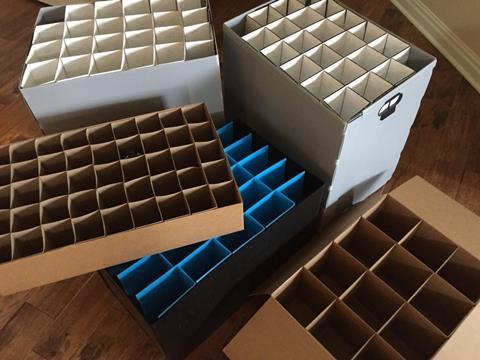
Alternative packaging materials could also help improve sustainability, for example by replacing plastics and other environmentally harmful materials with reusable metal trays, as done in Europe in many powertrain plants. The trays travel through the entire production proves, eliminating the need for single-use plastics and extra handling.
Magna has been using P2Packaging instead of straight wall containers and sleeve packs instead of bulk standard containers to help improve sustainability and reduce costs. The P2 patented corrugated box design, used by OEMs including Ford, GM, Tesla, VW and BMW, saves 53 acres of trees and 372,000lbs of CO2 per year per 25,000 box order and takes 58 trucks per year off the roads, according to P2.
BMW has also developed the PAL973, a single-use paper box, in collaboration with Project Oversea-Box. The box fits perfectly in a 40-ft shipping container, maximising container space utilisation and providing optimal stability for the safe transport of sensitive components. The OEM is now working on a project to research material replacement with 100% recycled paper for corrugated cardboard rings. The company believes the PAL973 has enormous innovation potential for even further sustainability gains.
A holistic approach to packaging as a competitive edge
OEMs and suppliers must move away from seeing packaging as a cost centre and start viewing it as a strategic enabler of efficiency and sustainability. By focusing on standardisation, automation-friendly design, cost control and cross-functional collaboration across the supply chain, packaging can become a key component of competitive automotive logistics.
At the upcoming Automotive Logistics & Supply Chain Europe event, running from 18-20 March 2025 at the Kameha Grand Bonn in Germany, we will be launching our new packaging focus. We will be diving deeper into how innovative packaging solutions and container management strategies are becoming the next competitive advantage in the automotive supply chain, unlocking cost savings, boosting efficiency, and driving sustainability through optimised material flows and cutting-edge designs, with input from experts at CHEP, Tri-Wall Circular, GALIA and ODETTE
The packaging focus will also be looking at European packaging and waste regulation and the implications for the automotive industry. Experts will share strategies to navigate compliance, reduce waste, and implement eco-friendly packaging solutions while maintaining cost efficiency and supply chain resilience.
Topics
- BMW
- Editor's pick
- Europe
- features
- GM
- Inbound Logistics
- Inventory management
- Lean Logistics
- Lean Transformation
- Logistics IT
- Logistics service provider
- Magna
- Material & Inventory Management
- Materials handling
- OEMs
- Packaging
- Packaging Design & Engineering
- Plant Logistics
- Service Part Logistics
- Supplier & Vendor Coordination
- Supplier Coordination
- Suppliers
- Supply Chain Optimisation
- Supply Chain Planning
- Supply Chain Purchasing
- Sustainability
- Sustainability Initiatives
- Sustainable Packaging & Recycling
- Technology & Automation
- Tesla
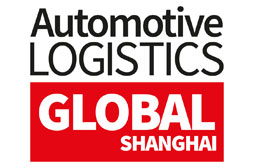
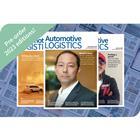


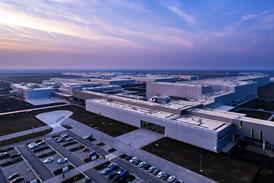
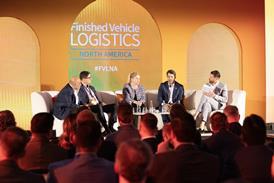
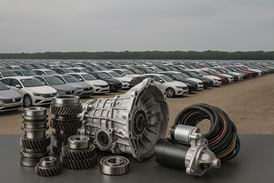




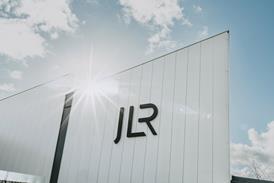

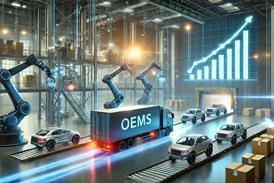
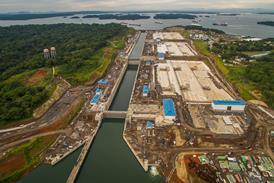


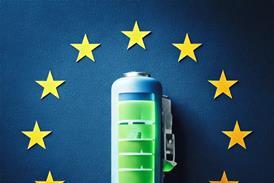

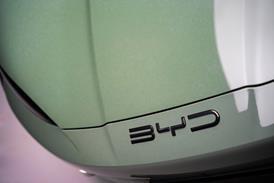

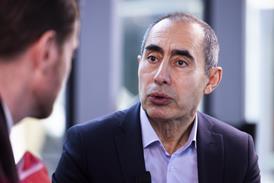


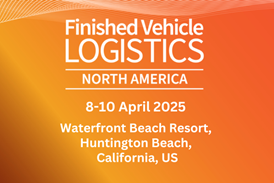
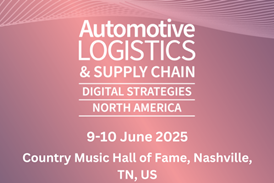
![Global[1]](https://d3n5uof8vony13.cloudfront.net/Pictures/web/a/d/s/global1_726550.svgz)
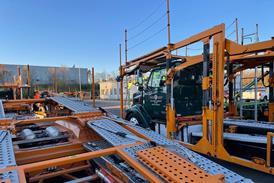
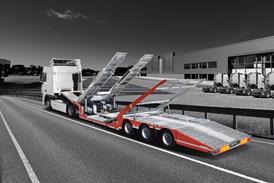
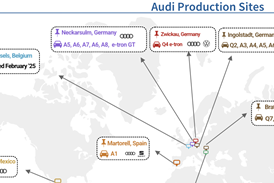


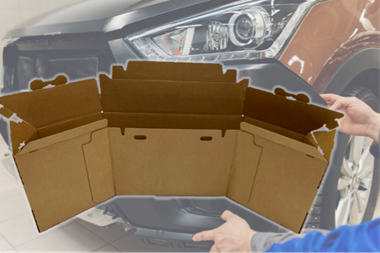
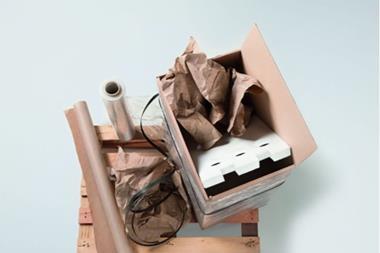
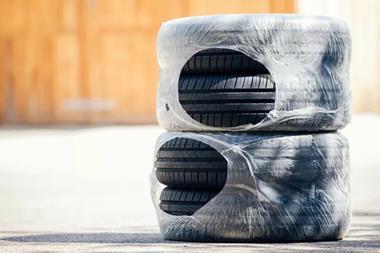
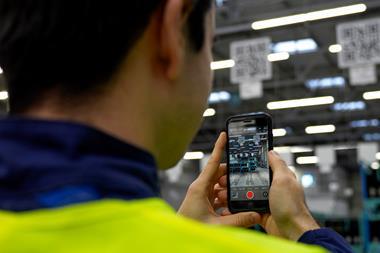
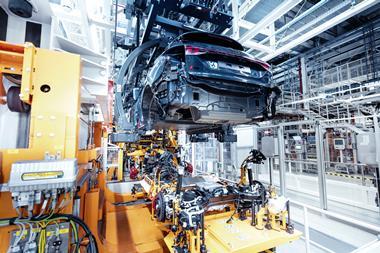
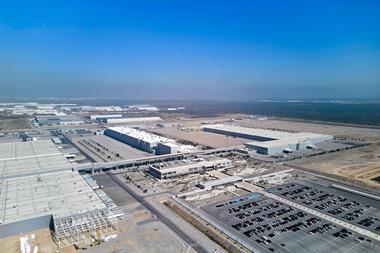



No comments yet